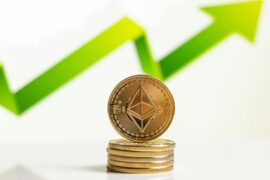This article may contain references to products or services from one or more of our advertisers or partners. We may receive compensation when you click on links to those products or services. Nonetheless, our opinions are our own.
While the latest U.K.-EU trade arrangement has garnered attention, its economic implications fall short of transformational. Political leaders may present it as a stabilizing step forward, yet many analysts suggest its real-world effect on Britain’s economy and public finances remains limited. The agreement formalizes existing ties rather than expanding them, and its capacity to resolve deeper structural challenges is modest at best. The constraints of sluggish productivity, labor shortages, and fractured supply chains continue to weigh on performance indicators, casting doubt on any dramatic improvement in fiscal outcomes.
The Broader Economic Picture
Trade Realities
While tariff reductions remain a feature of the deal, non-tariff barriers, such as customs declarations and regulatory divergence, persist. These hinder smooth trade flow and may dampen the anticipated benefits.
Investment Sentiment
Investors and businesses remain cautious. Regulatory uncertainty and fragmented market access present disincentives to new ventures or expansions, particularly in industries once tightly integrated with EU partners.
Fiscal Outcomes
Expectations of rising public revenue tied to a trade rebound appear optimistic.
| Metric | Before Agreement | Post-Agreement Projection |
|---|---|---|
| GDP Growth | 2.0% | 1.5% |
| Inflation Rate | 1.5% | 2.0% |
| Unemployment Rate | 4.0% | 4.5% |
The economic base remains under strain, which may limit the government’s ability to increase funding for public services or reduce debt burdens.
The Personal Financial Dimension
While the macroeconomic shifts are not revolutionary, they do trickle down to household-level effects. Consumers and workers will likely experience the consequences of trade dynamics and public policy choices.
Changes to Everyday Costs
Tariff structures and supply constraints could influence pricing across sectors. Imported food and goods may carry higher overheads, raising the cost of common purchases.
Labour Market Sensitivities
Employment in sectors reliant on EU trade, such as manufacturing and logistics, may remain uneven. Pay stagnation or job availability fluctuations could reflect the broader economic climate.
Currency Considerations
The pound’s valuation against the euro may affect travel costs and the price of cross-border purchases.
| Item | Pre-Deal (£) | Post-Deal (£) |
|---|---|---|
| Grocery Basket | 150 | 160 |
| Electronics | 400 | 380 |
| EU Travel Expenses | 300 | 350 |
Sudden shifts in currency strength can alter household budgets and consumer habits.
Sector-Specific Reflections
Agriculture
New customs checks and compliance measures have added complexity to exports. Smaller agricultural producers may encounter additional logistical or financial burdens, narrowing profit margins.
Manufacturing
The reliance on integrated EU supply chains presents both risks and a constrained recovery trajectory. While some firms may adapt, friction at the borders continues to affect lead times and input costs.
Services
| Sector | Projected Impact |
|---|---|
| Agriculture | Increased compliance burdens; margin pressure |
| Manufacturing | Ongoing supply chain disruptions; tepid investment outlook |
| Services | Regulatory uncertainty; constrained EU market access |
Financial and legal services face market access limitations. Without mutual recognition agreements or regulatory equivalence, these industries may struggle to maintain their former presence in EU markets.
Adjusting Financial Habits Amid Change

In periods of economic transition, personal financial management plays a larger role in maintaining stability. Individuals can take steps to reinforce resilience through budgeting and planning.
Investment Positioning
Distributing funds across asset classes such as equities, bonds, and real estate may provide a buffer against market volatility. Caution and diversification become prudent approaches in such climates.
Spending Adjustments
Revising monthly expenditure to align with new cost realities can support financial goals. Emphasis should be placed on necessities, with non-essential spending scrutinized more closely.
Emergency Funds
Maintaining a reserve equivalent to several months of living costs remains an effective safeguard.
| Financial Focus | Practical Action |
|---|---|
| Investments | Broaden exposure to reduce concentration risk |
| Monthly Budgeting | Reevaluate discretionary vs. essential costs |
| Preparedness | Maintain 3–6 months of emergency reserves |
This buffer offers protection against sudden income loss or unexpected expenses.
Income and Employment Diversification
With some sectors facing uncertainty, expanding professional skills or pursuing alternative income streams may offer greater security.
| Income Option | Suitability |
|---|---|
| Freelance Work | Flexible, skill-based |
| Online Consulting | Industry-specific knowledge application |
| Part-time Roles | Supplemental income opportunities |
Short courses, certifications, and freelance options provide avenues for increased adaptability.
Budget Planning in Uncertain Times
Household budgeting remains a powerful tool for navigating variable economic conditions. Clear visibility into planned versus actual spending can surface inefficiencies and create opportunities for savings.
| Category | Planned Monthly Cost | Actual Monthly Cost |
|---|---|---|
| Rent or Mortgage | £1,200 | £1,150 |
| Utilities | £200 | £210 |
| Groceries | £300 | £275 |
| Transport | £150 | £160 |
| Discretionary | £100 | £90 |
Maintaining disciplined oversight of expenses enables quicker response to economic shifts.
Final Thoughts on the Deal’s Limitations
The current U.K.-EU agreement, while structured and negotiated in good faith, represents a formalization more than an advancement. It falls short of addressing deeper structural issues that underlie Britain’s slow growth, strained public finances, and sector-specific vulnerabilities. While it prevents further disruption, it does not deliver the broader reform or economic acceleration once promised. The trajectory of economic performance remains closely tied to domestic policy choices and long-term investment in productivity-enhancing sectors.
Frequently Asked Questions
Has the agreement boosted investment significantly?
So far, no. Investor confidence remains restrained due to regulatory uncertainty and limited EU market access.
Why is GDP growth projected to slow post-agreement?
Structural issues such as low productivity, supply chain inefficiencies, and labor shortages limit economic expansion, even with formalized trade terms.
Will consumers experience higher prices?
Yes. Import costs on food, goods, and travel may rise due to compliance checks, currency volatility, and restricted supply routes.
Are certain sectors more affected than others?
Yes. Agriculture, manufacturing, and professional services face distinct challenges due to their reliance on cross-border operations and EU integration.

Reviewed and edited by Albert Fang.
See a typo or want to suggest an edit/revision to the content? Use the comment form below for feedback.
At FangWallet, we value editorial integrity and open collaboration in curating quality content for readers to enjoy. Much appreciated for the assist.
Did you like our article and find it insightful? We encourage sharing the article link with family and friends to benefit as well - better yet, sharing on social media. Thank you for the support! 🍉
Article Title: Will the UK-EU Trade Pact Fix Britain’s Economy?
https://fangwallet.com/2025/06/26/will-the-uk-eu-trade-pact-fix-britains-economy/The FangWallet Promise
FangWallet is an editorially independent resource - founded on breaking down challenging financial concepts for anyone to understand since 2014. While we adhere to editorial integrity, note that this post may contain references to products from our partners.
The FangWallet promise is always to have your best interest in mind and be transparent and honest about the financial picture.
Become an Insider

Subscribe to get a free daily budget planner printable to help get your money on track!
Make passive money the right way. No spam.
Editorial Disclaimer: The editorial content on this page is not provided by any of the companies mentioned. The opinions expressed here are the author's alone.
The content of this website is for informational purposes only and does not represent investment advice, or an offer or solicitation to buy or sell any security, investment, or product. Investors are encouraged to do their own due diligence, and, if necessary, consult professional advising before making any investment decisions. Investing involves a high degree of risk, and financial losses may occur including the potential loss of principal.
Source Citation References:
+ Inspo
There are no additional citations or references to note for this article at this time.











































